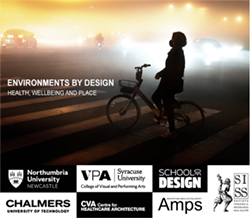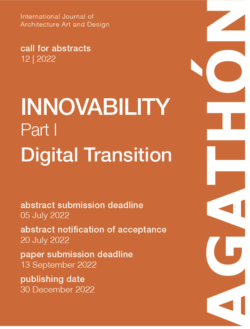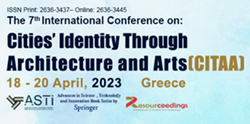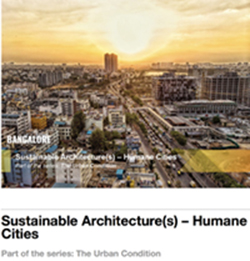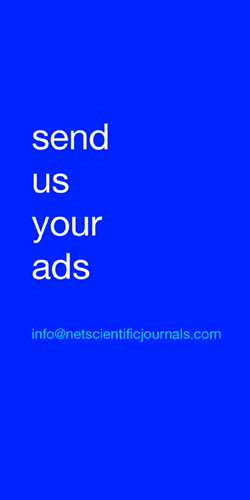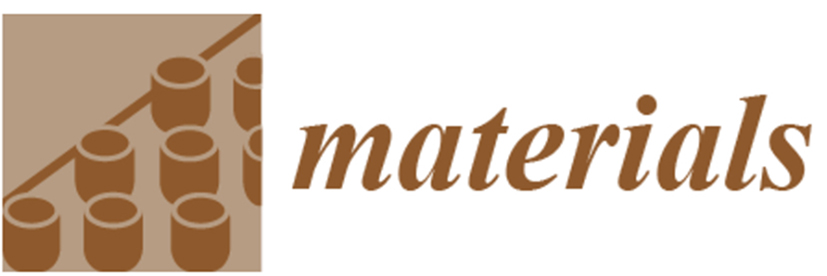ISSN (online): 1996-1944
Call of the Journal:
- Advanced Carbon Materials in Water Treatment or Separations Technology
- Advanced Functional Hybrid Materials for Novel Biomolecular Electronics
- Advances in Biomaterials | Design, Synthesis, Characterisation and Biomedical Application
- Advances in Construction and Building Materials
- Advances in Green Construction Materials
- Assessment of Metallurgical and Mechanical Properties of Welded Joints via Numerical Simulation and Experiments
- Carbon Compounds-Reinforced Ceramics
- Concrete and Waterproofing Materials | Development of Waterproofing Technology for Buildings and Civil Concrete Structures
- Corrosion Inhibitors for Steel | Experimental and Theoretical Studies
- Damage and Failure of Polymers, Polymer-Like Materials, Adhesives and Polymer Nanocomposites
- Development of Energy Storage or Conversion Element Based on Various Nano Materials
- Dyes | Synthesis, Properties, and Applications
- Dynamic Behavior of Ceramic Composites
- Flexible Sensors and Actuators for Novel Wearable Solutions
- Fundamentals and Applications of Bionano Sensor Techniques
- Graphene Foam Based Composites
- Growth and Application of Foam-Based Materials
- High Performance Concrete
- Hybrid Noble Metal/Graphene Aerogels | Synthesis, Characterization and Applications for Chemical Sensing and Biosensing
- Hydrogen Storage and Fuel Cells | Materials, Characterization and Applications
- Load Test and Numerical Analysis on Construction Materials
- Machining and Surface Properties of Steel Parts
- Materials under Extreme Conditions | Technologies for CRMs Reduction, Substitution and Recovery
- Microplastics and Nanoplastics | From Resource to Pollution
- Mineral-Bonded Composites for Enhanced Structural Impact Safety
- Modification and Processing of Biodegradable Polymers
- Nanostructured Semiconductors for Photoinduced Applications
- Novel Inorganic Adsorbents for Environmental Purification
- Numerical Simulation and Experimental Studies of Wave Phenomena in Composite Materials
- Performance Research of Polyurethane Foams and Composites
- Physics, Electrical and Structural Properties of Dielectric Layers
- Precision and Ultra-Precision Subtractive and Additive Manufacturing Processes of Alloys and Steels
- Processing and Thermal Properties of Hybrid Composites
- Recent Advances in 3D Printing for Biomaterials
- Recent Progress in the Development, Material Properties, and Post-Processing of Additively Manufactured Components
- Silica and Silica-based Materials for Biotechnology, Polymer Composites and Environmental Protection
- Study on the Modification and Compressive Properties of Concrete Buildings Materials
- Superconductors for Opto-Nano and Micro-Electro-Mechanical Systems (O-N/MEMS)
- Synthesis and Characterization of Hybrid Nanomaterials and Nanocomposites
- Synthesis, Properties and Applications of Polymer Blends
- Testing of Materials and Elements in Civil Engineering
- The Science and Technology of 3D Printing
Aug
2021
Welding has been the most important joining technique applied to metallic materials since the early twentieth century when the arc welding technology developed. Since then, many innovations have been developed, from high energy density processes to solid state welding processes up to, most recently, hybrid metal diffusion and bonding. Advantages of welding processes are: Absence of holes that weaken the structure, reduction of production cost, faster speed of fabrication compared to bulky riveted/butted joints and so on. However, there are disadvantages, as well. Near the joint, the metallic material is altered, most of the time in a negative direction. Fatigue strength in particular is reduced compared to that of the parent metal because of metallurgical defects or stress concentration effects at the weld toe and/or root. Residual stresses are even induced that according to their sign could reduce the load bearing capacity and the fatigue strength of the joint. In this scenario, welding process numerical simulation results are extremely useful to optimize the process parameter affecting the microstructure and the mechanical properties of the welded joint. At the same time, static and fatigue strength assessment of welding joints via experiments are required to validate both numerical models and new design methodologies like the strain energy density or the peak stress approach. This Special Issue aims to collect original works dealing with new advances in welded joints microstructure and mechanical characterization via numerical simulation and/or experiments. Papers that propose new numerical strategies as well as experimental fatigue data and design methodologies are particularly appreciated.
Keywords: Welding numerical simulation; residual stress; fatigue; welding design; microstructure; modeling; mechanical properties; post welding heat treatment.
Assessment of Metallurgical and Mechanical Properties of Welded Joints via Numerical Simulation and Experiments
Welding has been the most important joining technique applied to metallic materials since the early twentieth century when the arc welding technology developed. Since then, many innovations have been developed, from high energy density processes to solid state welding processes up to, most recently, hybrid metal diffusion and bonding. Advantages of welding processes are: Absence of holes that weaken the structure, reduction of production cost, faster speed of fabrication compared to bulky riveted/butted joints and so on. However, there are disadvantages, as well. Near the joint, the metallic material is altered, most of the time in a negative direction. Fatigue strength in particular is reduced compared to that of the parent metal because of metallurgical defects or stress concentration effects at the weld toe and/or root. Residual stresses are even induced that according to their sign could reduce the load bearing capacity and the fatigue strength of the joint. In this scenario, welding process numerical simulation results are extremely useful to optimize the process parameter affecting the microstructure and the mechanical properties of the welded joint. At the same time, static and fatigue strength assessment of welding joints via experiments are required to validate both numerical models and new design methodologies like the strain energy density or the peak stress approach. This Special Issue aims to collect original works dealing with new advances in welded joints microstructure and mechanical characterization via numerical simulation and/or experiments. Papers that propose new numerical strategies as well as experimental fatigue data and design methodologies are particularly appreciated.
Keywords: Welding numerical simulation; residual stress; fatigue; welding design; microstructure; modeling; mechanical properties; post welding heat treatment.
ADS-Astrophysics Data System, AGORA(FAO), CAB Abstracts(CABI), Chemical Abstracts (ACS), Current Contents-Engineering, Computing & Technology (Clarivate Analytics), DOAJ, Ei Compendex/Engineering Village (Elsevier), Genamics JournalSeek, Global Health (CABI), HINARI (WHO), Inspec (IET), Journal Citation Reports/Science Edition (Clarivate Analytics), Julkaisufoorumi Publication Forum (Federation of Finnish Learned Societies), Norwegian Register for Scientific Journals, Series and Publishers (NSD), Polymer Library (Smithers Rapra), PubMed (NLM), Science Citation Index Expanded – Web of Science (Clarivate Analytics), Scopus (Elsevier), Web of Science (Clarivate Analytics), Zetoc (British Library), CLOCKSS (Digital Archive), e-Helvetica (Swiss National Library Digital Archive), PubMed Central (NLM), Academic OneFile (Gale/Cengage Learning), EBSCOhost (EBSCO Publishing), Energy & Power Source (EBSCO), Engineering Source (EBSCO), Google Scholar, J-Gate (Informatics India), Materials Science & Engineering (ProQuest).
Info at: www.mdpi.com/journal/materials/apc
Guest Editor
Prof. Dr. Paolo Ferro

